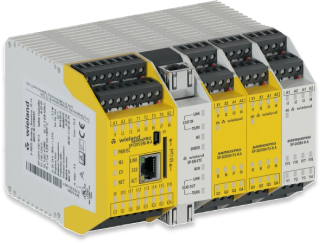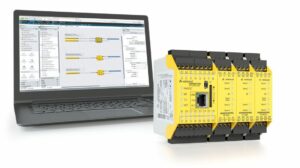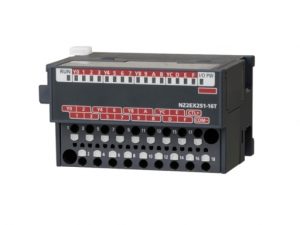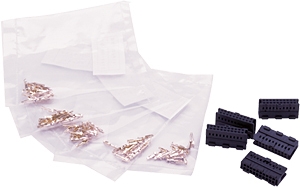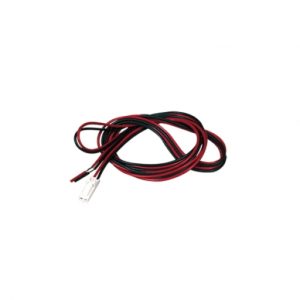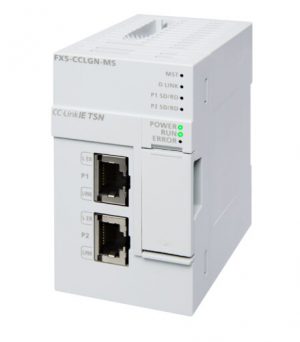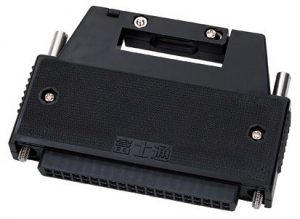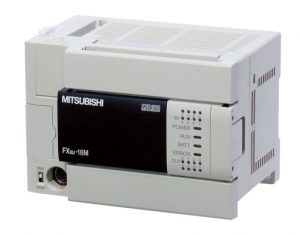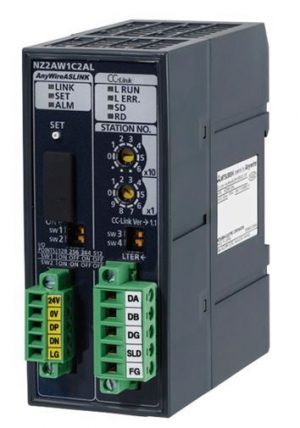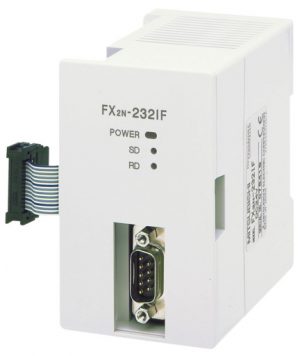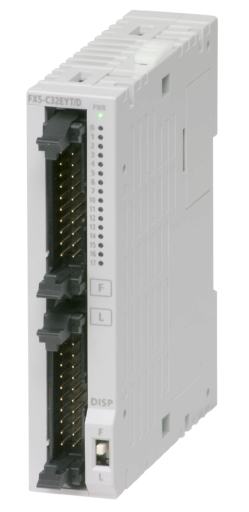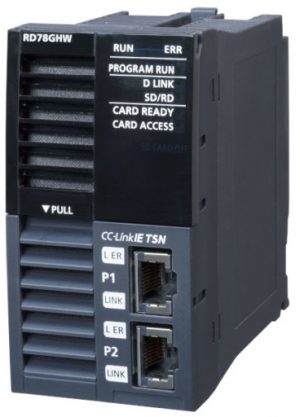Safety PLC Understanding Programmable Logic Controllers (PLCs) Definition and Overview Programmable Logic Controllers (PLCs) are ruggedized computers used to automate industrial processes. These include assembly…
Safety PLC
Understanding Programmable Logic Controllers (PLCs)
Definition and Overview
Programmable Logic Controllers (PLCs) are ruggedized computers used to automate industrial processes. These include assembly lines, robotic devices, or any process that requires high reliability, ease of programming, and process fault diagnosis. Traditional PLCs are central to automation in manufacturing, where speed and efficiency are critical.
Architecture of PLCs
A PLC typically consists of a CPU, input/output (I/O) modules, power supply, and communication interfaces. The CPU executes control instructions based on logic programmed by engineers, while I/O modules handle signals from sensors and actuators. This modular design allows scalability and integration into complex industrial environments.
Common Applications in Industry
PLCs are commonly used in automotive assembly, packaging lines, food and beverage processing, and material handling systems. They serve as the backbone of automation in industries requiring both precision and durability, making them indispensable in modern manufacturing.
Trends in PLC Technology
Modern PLCs are evolving with technologies like the Industrial Internet of Things (IIoT), enabling real-time data sharing and remote diagnostics. Features like Ethernet/IP communication, wireless integration, and cloud-based monitoring are becoming standard. There’s also a growing shift toward modular and compact PLC designs.
Introduction to Safety PLCs
What Makes a PLC a ‘Safety’ PLC?
A Safety PLC is specifically designed to perform safety-related control functions and meet international safety standards like IEC 61508 and ISO 13849-1. Unlike traditional PLCs, safety PLCs are built with dual-channel redundancy and diagnostic capabilities to detect and respond to faults.
Role in Enhancing Machine Safety
Safety PLCs are crucial in implementing machine guarding systems, such as light curtains, emergency stop circuits, and safety interlocks. Their ability to monitor and react to unsafe conditions in real-time significantly reduces the risk of accidents and operational downtime.
Redundancy and Safety Standards Compliance
To comply with safety integrity levels (e.g., SIL 2, SIL 3), safety PLCs integrate redundant processors and fail-safe logic. This ensures that even if one component fails, the system maintains safe operation. Certified systems like ReeR Mosaic and Wieland samos PRO are built to meet these rigorous standards.
Key Differences Between Standard and Safety PLCs
Design and Functionality
Standard PLCs focus on performance and control efficiency, while safety PLCs prioritize fault tolerance and compliance. Safety PLCs include hardware-level safeguards and are tested to higher levels of reliability.
Integration with Safety Instrumented Systems (SIS)
Safety PLCs are integral components of Safety Instrumented Systems (SIS), often used in high-risk environments such as chemical plants or power generation facilities. These systems rely on PLCs with fail-safe features to automatically bring operations to a safe state during emergencies.
Differences in Programming and Operation
Programming safety PLCs requires specialized software and adherence to functional safety programming principles. Techniques like modular programming and block-based logic help ensure code is both traceable and verifiable. Common tools include software environments for ReeR Mosaic, Mitsubishi Series, Wieland Samos and Pizzato Gemnis Series.
Integration with Modern Technologies
Connection with Machine Automation Controllers (MACs)
Safety PLCs can seamlessly integrate with MACs to provide coordinated control over both safety and automation functions. This enables synchronized processes and centralized monitoring in systems like robotic manufacturing cells.
Role in Industrial Internet of Things (IIoT)
With IIoT, safety PLCs can transmit real-time diagnostics, machine status, and event logs to cloud-based systems. This aids predictive maintenance and enhances visibility into safety-critical operations, particularly in industries like automotive and food processing.
Programming Strategies for PLCs
Traditional PLC Programming Techniques
Standard PLC programming uses ladder logic, function block diagrams (FBD), and structured text. These methods enable intuitive control design and are widely supported across platforms.
Safety-Specific PLC Programming Strategies
Safety PLCs demand rigorous logic testing, often employing redundancy and interlock conditions. Programs must be structured to detect inconsistencies and trigger safe states under fault conditions. For instance, ReeR Mosaic’s modular configuration supports drag-and-drop safety functions.
Modular Programming Best Practices
Using modular blocks for each safety function—such as emergency stops or light curtain integration—helps isolate and test components individually. This enhances code maintainability and supports certification audits.
Importance of Regular Testing and Validation
Routine testing of safety logic is critical. Validation involves simulating faults and ensuring the PLC triggers appropriate safety responses. This process ensures ongoing compliance with standards and boosts long-term reliability.
Advantages and Challenges of Safety PLCs
Key Benefits of Implementing Safety PLCs
- Ensures worker safety and regulatory compliance
- Reduces downtime with intelligent diagnostics
- Offers flexibility in system upgrades and expansion
- Compatible with various safety sensors and actuators
Common Challenges and Drawbacks
- Higher upfront cost compared to standard PLCs
- Requires specialized programming knowledge
- Longer validation and certification processes
- Complexity in integrating with legacy system
Case Studies Highlighting Benefits
A major food processing plant implemented ReeR Mosaic to integrate emergency stops, light curtains, and door interlocks. The result was a 30% reduction in downtime and improved compliance with ISO 13849-1. Another example is a chemical facility using Mitsubishi Safety PLCs to enhance process reliability while meeting SIL 3 requirements.
Real-World Applications of Safety PLCs
Examples in Various Industries
Safety PLCs are widely deployed across a range of applications, enhancing both safety and operational control. Key industrial applications include:
- Automotive application (Assembly Lines): Coordinated robot and conveyor safety control
- Food & Beverage Production: Safe shutdown of packaging and processing machinery
- Pharmaceutical Manufacturing: Compliance with GMP and operator protection
- Mining: Monitoring and emergency stop functions in hazardous environments
- Packaging Facilities: Safe coordination of multi-axis packaging lines
- Mechanical Engineering: Machine safeguarding and motion control
- Battery Manufacturing: Managing explosion risks and thermal monitoring
- Textile Factories: Integration with cutting, spinning, and weaving systems
- Wood Processing & Manufacturing: Safety interlocks on saws and routers
- Robotics & Automation: Integrated safety and process control in robotic cells
- Agriculture: Safety control for automated irrigation, planting, and harvesting systems
- Aerospace: Precision testing and high-reliability safety compliance
- Aviation: Ground equipment safety systems and component testing rigs
Case Studies Highlighting Benefits
A major food processing plant implemented ReeR Mosaic to integrate emergency stops, light curtains, and door interlocks. The result was a 30% reduction in downtime and improved compliance with ISO 13849-1. Another example is a chemical facility using Mitsubishi Safety PLCs to enhance process reliability while meeting SIL 3 requirements.
Testing Methodologies for Safety PLCs
Importance of Thorough Testing
Thorough testing validates system reliability and compliance. This includes unit testing, fault injection, and end-to-end validation under operational conditions. Safety PLCs from Pizzato GEMNIS and Wieland are equipped with diagnostic feedback to support ongoing verification and maintenance.
Further Information
Safety PLCs work in conjunction with various input devices such as emergency stop buttons, light curtains, safety mats, and interlock switches to detect hazardous conditions in real time. These programmable controllers are configured using specialized programming software that supports industry-standard programming languages such as Ladder Logic (LD), Function Block Diagram (FBD), and Sequential Function Charts (SFC). These languages allow engineers to develop structured safety logic for monitoring, fault detection, and controlled shutdowns. The programmable controller acts as the central brain, interpreting input signals and executing commands to actuators based on the programmed logic. Integrated safety circuits ensure that even in the event of a system fault or power failure, machines revert to a safe state, thereby protecting personnel and equipment.
A wide range of safety input devices can be connected to a Safety PLC to monitor machinery and protect operators in industrial environments. These devices act as the system’s eyes and ears—feeding real-time signals to the programmable logic controller to ensure machines operate within safe parameters. Among the most commonly integrated devices are safety light curtains, which create an invisible barrier around hazardous zones. When a person or object interrupts the beam, the PLC detects the signal and immediately initiates a machine stop or controlled shutdown, making light curtain PLC integration essential for safeguarding open or accessible machine areas.
Other popular input devices include safety laser scanners, which provide area and perimeter monitoring with configurable zones. These are particularly effective for protecting robotic workcells, AGVs (automated guided vehicles), or conveyor loading zones. Safety switches, including interlock switches, hinged door switches, and RFID safety sensors, are also commonly wired to the PLC to monitor access points like doors, gates, and hatches. These switches ensure that machines stop when a guard is opened or not properly latched.
Additionally, emergency stop (E-Stop) buttons are critical safety inputs, designed to allow operators to instantly halt all motion in the event of a hazard. These are often hardwired into the PLC safety circuit and placed at multiple accessible points on the machine or production line. Two-hand control devices are used for applications where both hands must be on the controls to operate the machine safely, ensuring the operator cannot reach into the danger zone while the machine is active.
Other key safety inputs include pressure-sensitive safety mats, which detect the presence of personnel within a hazardous area, and safety edges or bumpers, which are mounted to moving machine parts and trigger a stop if they make contact with an obstruction.
When integrated into a Safety PLC system, these devices provide real-time input signals that are continuously monitored for faults, interruptions, and operator intervention. This ensures machinery complies with safety standards like ISO 13849 and IEC 61508, while also reducing risk and downtime. Whether you’re setting up a light curtain with a PLC, connecting safety interlocks, or configuring a multi-zone laser scanner, modern safety controllers like ReeR Mosaic, Wieland samos, and Pizzato GEMNIS offer built-in compatibility and easy configuration for virtually all types of safety input devices.
